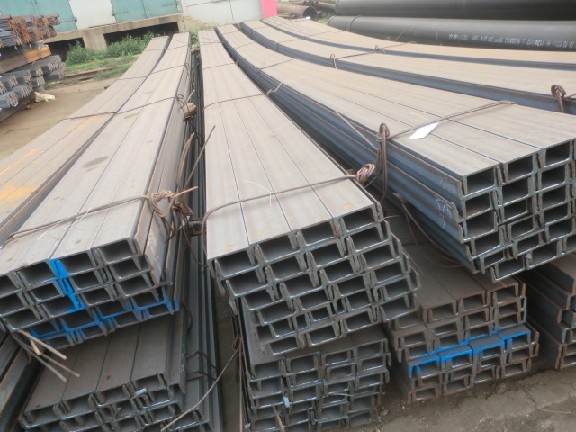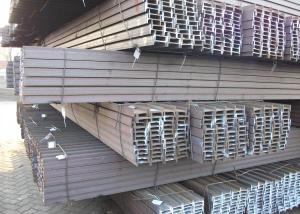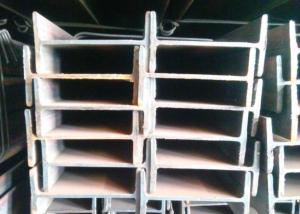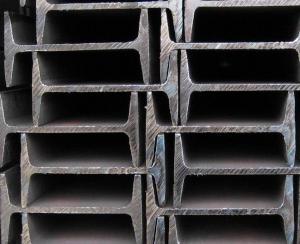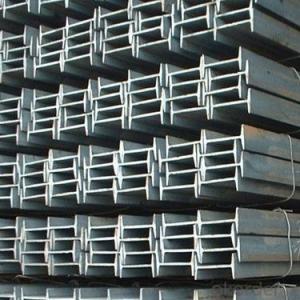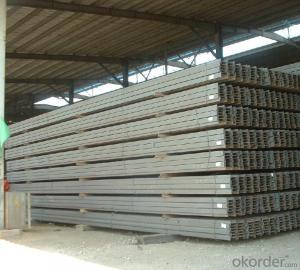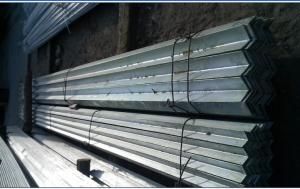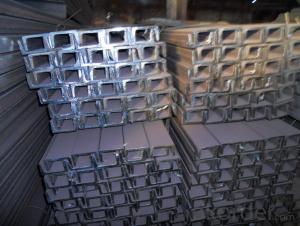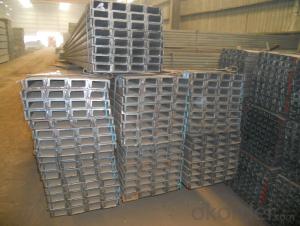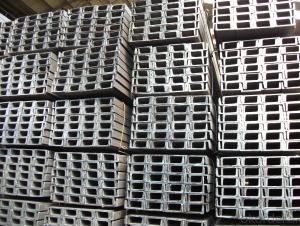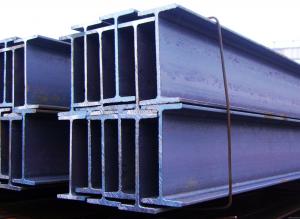HR Steel U Channels Made in China with High Quality and Competitive Prices
- Loading Port:
- Tianjin
- Payment Terms:
- TT or LC
- Min Order Qty:
- 25 m.t.
- Supply Capability:
- 100000 m.t./month
OKorder Service Pledge
OKorder Financial Service
You Might Also Like
Product Description:
OKorder is offering HR Steel U Channels Made in China with High Quality and Competitive Prices at great prices with worldwide shipping. Our supplier is a world-class manufacturer of steel, with our products utilized the world over. OKorder annually supplies products to European, North American and Asian markets. We provide quotations within 24 hours of receiving an inquiry and guarantee competitive prices.
Product Applications:
HR Steel U Channels Made in China with High Quality and Competitive Prices are ideal for structural applications and are widely used in the construction of buildings and bridges, and the manufacturing, petrochemical, and transportation industries.
Product Advantages:
OKorder's HR Steel U Channels Made in China with High Quality and Competitive Prices are durable, strong, and resist corrosion.
Main Product Features:
· Premium quality
· Prompt delivery & seaworthy packing (30 days after receiving deposit)
· Corrosion resistance
· Can be recycled and reused
· Mill test certification
· Professional Service
· Competitive pricing
Packaging & Delivery:
Packaging Detail: products are packed in bundle and then shipped by container or bulk vessel, deformed bar is usually naked strapping delivery, when storing, please pay attention to moisture proof. The performance of rust will produce adverse effect.
Each bundle weight: 2-3MT, or as required
Payment term: TT or L/C
Delivery Detail: within 45 days after received advanced payment or LC.
Label: to be specified by customer, generally, each bundle has 1-2 labels
Trade terms: FOB, CFR, CIF
FAQ:
Q1: Why buy Materials & Equipment from OKorder.com?
A1: All products offered byOKorder.com are carefully selected from China's most reliable manufacturing enterprises. Through its ISO certifications, OKorder.com adheres to the highest standards and a commitment to supply chain safety and customer satisfaction.
Q2: How do we guarantee the quality of our products?
A2: We have established an advanced quality management system which conducts strict quality tests at every step, from raw materials to the final product. At the same time, we provide extensive follow-up service assurances as required.
Q3: How soon can we receive the product after purchase?
A3: Within three days of placing an order, we will begin production. The specific shipping date is dependent upon international and government factors, but is typically 7 to 10 workdays.
Images:
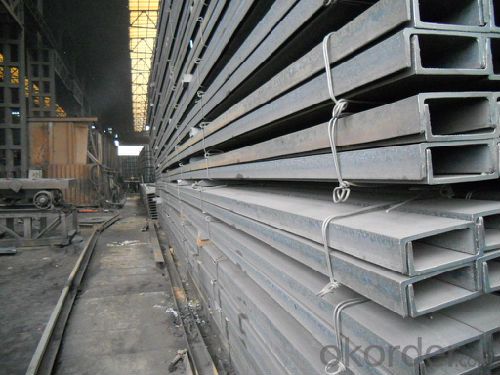
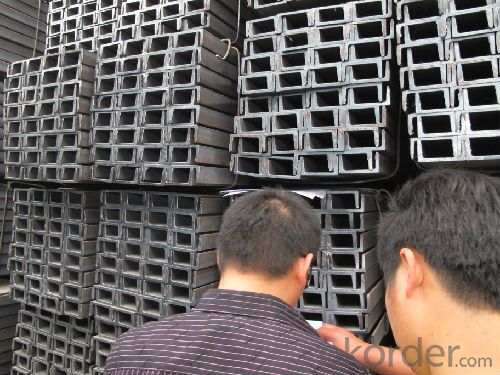
- Q: Are there any fire safety considerations when using steel I-beams?
- Yes, there are fire safety considerations when using steel I-beams. Steel is a non-combustible material; however, it loses its strength and structural integrity when exposed to high temperatures. Therefore, it is important to ensure proper fire protection measures such as fire-resistant coatings, fireproof insulation, and the installation of fire sprinkler systems to prevent the steel beams from weakening or collapsing during a fire.
- Q: Can steel I-beams be used in retail or commercial renovation projects?
- Yes, steel I-beams can definitely be used in retail or commercial renovation projects. Steel I-beams are known for their strength and durability, making them ideal for supporting heavy loads and providing structural stability. In retail or commercial renovation projects, steel I-beams can be used to create open and flexible floor plans, support mezzanine levels, reinforce existing structures, or even create new structures. They can also be used for creating large windows or atriums, as they offer excellent load-bearing capabilities. Additionally, steel I-beams are often preferred in renovation projects due to their fire resistance and resistance to pests and decay. Overall, steel I-beams are a popular choice in retail or commercial renovation projects due to their versatility, strength, and ability to withstand the demands of heavy usage.
- Q: How do steel I-beams perform in terms of wind resistance?
- Steel I-beams are known for their superior performance in terms of wind resistance. The structural design of the I-beam, with its flanges and webs, provides excellent strength and rigidity, making it highly resistant to the forces exerted by wind. The shape of the I-beam allows for efficient distribution of the wind load, minimizing the risk of failure or damage. The flanges of the I-beam are specifically designed to resist bending and torsional forces caused by wind, while the web helps maintain the overall stability and stiffness of the beam. This combination of design elements ensures that the I-beam can withstand high wind speeds and turbulent conditions. Moreover, steel itself is a highly durable and strong material, which further enhances the wind resistance of I-beams. Steel has a high tensile strength and elasticity, enabling it to absorb and distribute the wind load effectively. Additionally, steel is not susceptible to rot, warping, or decay, unlike some other building materials, ensuring long-term durability and performance even in harsh weather conditions. Overall, steel I-beams are widely regarded as one of the most reliable and effective choices for withstanding wind forces. Their structural design, combined with the strength and durability of steel, make them a preferred choice in construction projects that require robust wind resistance.
- Q: Can steel I-beams be used for mezzanine or raised storage platforms?
- Yes, steel I-beams can be used for mezzanine or raised storage platforms. They are commonly used in the construction of such structures due to their high strength and load-bearing capabilities.
- Q: Can steel I-beams be used for rooftop structures or equipment support?
- Yes, steel I-beams can be used for rooftop structures or equipment support. Steel I-beams are known for their strength and load-bearing capabilities, making them suitable for supporting heavy equipment or constructing rooftop structures such as platforms or supports.
- Q: What are the common methods for protecting steel I-beams from corrosion?
- There are several common methods for protecting steel I-beams from corrosion. These methods include: 1. Coating: One of the most widely used methods is the application of protective coatings on the surface of the steel beams. These coatings act as a barrier, preventing moisture, oxygen, and other corrosive agents from reaching the steel surface. Common coating options include epoxy, polyurethane, and zinc-rich paints. These coatings not only provide corrosion protection but also enhance the aesthetic appeal of the beams. 2. Galvanization: Another effective method is galvanizing the steel beams. Galvanization involves applying a layer of zinc onto the surface of the beams. This zinc coating acts as a sacrificial layer, corroding instead of the underlying steel when exposed to corrosive elements. Galvanized steel beams are widely used in outdoor installations or areas with high humidity or exposure to saltwater. 3. Cathodic Protection: This method involves the use of sacrificial anodes or impressed current to protect the steel beams. Sacrificial anodes, usually made of zinc or aluminum, are attached to the beams and corrode in place of the steel when exposed to corrosion. Impressed current systems use an external power source to create an electrical current that protects the steel beams from corrosion. 4. VCI (Vapor Corrosion Inhibitor): VCI is a method that involves the use of chemicals or coatings that release corrosion-inhibiting vapors. These vapors form a protective layer on the steel surface, effectively preventing corrosion. VCI is commonly used for long-term storage or transportation of steel beams. 5. Regular Maintenance: Regular inspection and maintenance are crucial for protecting steel I-beams from corrosion. This includes cleaning the beams, removing any dirt or debris that may trap moisture, and promptly repairing any damaged coatings or exposed areas. Additionally, implementing a corrosion prevention program, such as routine inspections and maintenance schedules, can help identify and address potential corrosion issues before they become severe. It is important to note that the choice of corrosion protection method depends on various factors such as the environment, intended use of the steel beams, budget, and desired lifespan. Consulting with corrosion protection experts or engineers can help determine the most suitable method for protecting steel I-beams in a specific situation.
- Q: How do steel I-beams perform in areas with high humidity or moisture content?
- Steel I-beams generally perform well in areas with high humidity or moisture content. This is primarily because steel is a highly durable material that is resistant to corrosion. However, it is important to note that prolonged exposure to high levels of moisture can still have an impact on the performance and longevity of steel I-beams. In areas with high humidity or moisture, the risk of corrosion increases due to the presence of moisture in the air. Moisture can cause the steel to react with oxygen, leading to the formation of rust. This can weaken the structural integrity of the I-beams over time. To mitigate this risk, it is crucial to implement proper maintenance and preventive measures. This includes regular inspections to identify any signs of corrosion or damage, and taking necessary steps to address them promptly. Applying protective coatings or paint can also help to create a barrier between the steel and moisture, reducing the risk of corrosion. Additionally, proper ventilation and moisture control measures should be in place in areas with high humidity or moisture content. These measures can help to reduce the overall moisture levels and limit the exposure of steel I-beams to moisture. Overall, while steel I-beams generally perform well in areas with high humidity or moisture content, it is important to take appropriate precautions to prevent corrosion and ensure their long-term durability. Regular maintenance, protective coatings, and moisture control measures are essential to ensure optimal performance in such environments.
- Q: Can steel I-beams be used for food processing plants?
- Yes, steel I-beams can be used for food processing plants. Steel I-beams are commonly used in construction for their strength, durability, and load-bearing capabilities. These properties make them suitable for supporting heavy equipment, machinery, and structures in food processing plants. Additionally, steel I-beams are resistant to corrosion, which is important in environments where food safety and hygiene are paramount. They can also be easily cleaned and maintained, ensuring a safe and sanitary processing environment. Overall, steel I-beams are a popular choice in the construction of food processing plants due to their strength, durability, and suitability for the specific requirements of the industry.
- Q: Are steel I-beams suitable for residential basement walls?
- Steel I-beams can be suitable for residential basement walls, depending on the specific circumstances and requirements of the project. Steel I-beams offer several advantages, such as high strength-to-weight ratio, durability, and resistance to various forces like bending, shearing, and compression. One of the main benefits of using steel I-beams in basement walls is their ability to support heavy loads, making them ideal for areas with expansive soil or high water tables. They can resist the lateral pressure exerted by the soil and prevent basement wall failure, which is a common concern in residential construction. Moreover, steel I-beams are non-combustible, providing an added level of fire protection compared to other materials like wood. This can enhance the safety of a residential basement, especially when considering potential hazards such as fire or smoke spreading from adjacent spaces. However, it is essential to consider a few factors before deciding to use steel I-beams for residential basement walls. Firstly, the cost of steel I-beams can be higher than other materials, which might impact the overall budget of the project. Secondly, the installation process may require specialized equipment and skilled labor, potentially increasing the complexity and time needed for construction. Additionally, steel I-beams may require proper insulation to prevent thermal bridging, as metal conducts heat more readily than materials like wood or concrete. Adequate insulation will help maintain a comfortable temperature in the basement and reduce energy consumption. In summary, steel I-beams can be suitable for residential basement walls, offering several advantages such as strength, durability, and fire resistance. However, it is crucial to consider factors such as cost, installation complexity, and insulation requirements before making a final decision. Consulting with a structural engineer or a professional contractor can provide valuable guidance in determining if steel I-beams are the best choice for a specific residential basement project.
- Q: Span 6 meters, with 160 I-beam can bear much weight?
- The subject is rough and can only be crudely assumed and crudely answered. Set to hot rolled Q235 material. The bending strength design value - 215N/mm.
Send your message to us
HR Steel U Channels Made in China with High Quality and Competitive Prices
- Loading Port:
- Tianjin
- Payment Terms:
- TT or LC
- Min Order Qty:
- 25 m.t.
- Supply Capability:
- 100000 m.t./month
OKorder Service Pledge
OKorder Financial Service
Similar products
Hot products
Hot Searches
Related keywords





